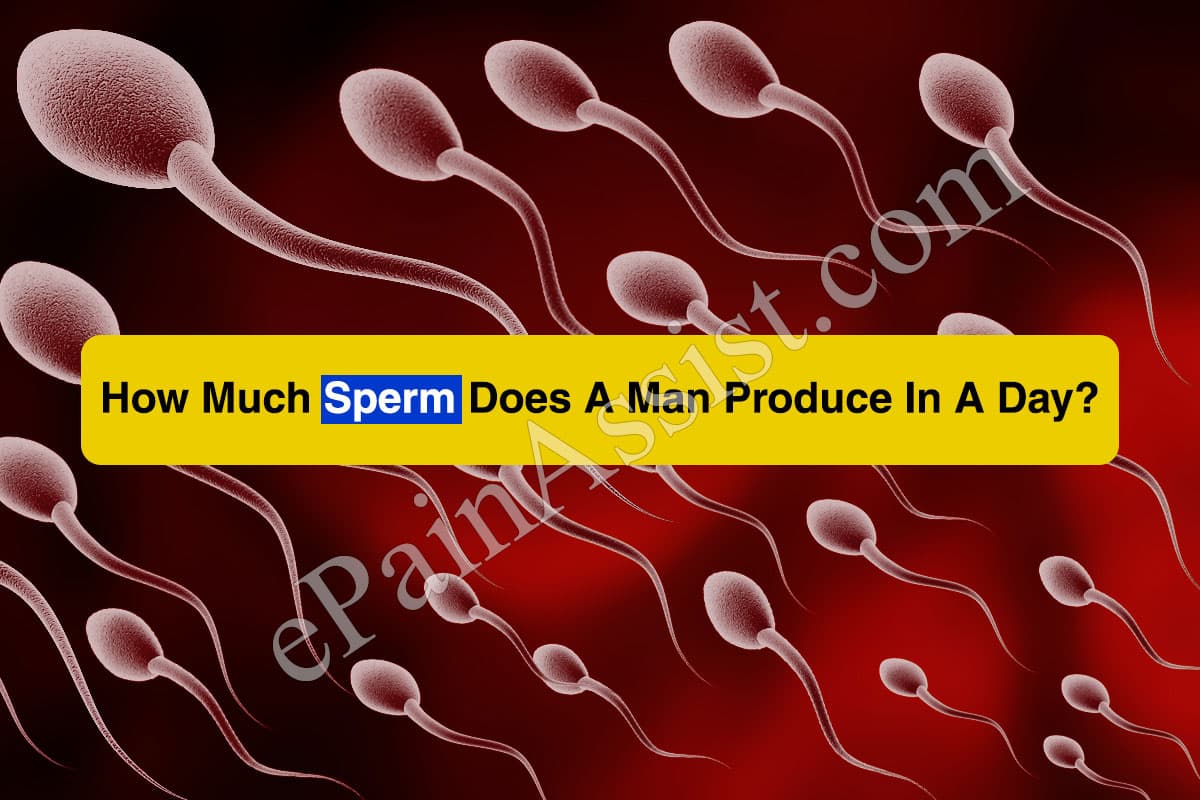Sperms are the smallest cells of the human body produced in the testes (male gonads). They are formed in large quantities and are carried by the seminal fluid produced in male reproductive organs. Unlike other cells of the body, sperm feed on fructose instead of glucose. They are ejected out of the male body during an ejaculation after a sexual arousal. The sperm count determines the number of sperm ejected out in an ejaculate. These cells enter into female vagina, travel through the uterus and fertilize a female egg in the fallopian tube.

How Much Sperm Does A Man Produce In A Day?
Sperms are short lived. They are produced in the testicles. Sperms develop from a germ cell to become fully mature sperm that can fertilize an egg successfully. For maturation, sperm requires proper nutrition and temperature. They feed on fructose instead of glucose. Sperms remain in long tube named epididymis after production and they are ejected out only during ejaculation. Their lifespan in epididymis is only one week after which they die. Millions of sperms are ejaculated during a sexual intercourse. Still, only one lucky sperm can meet the egg and fertilize it. Sperm can survive 48-72 hours after ejaculation.
- A man produces on average 290 million sperm cells in a day.
- A man above 50 years produce 130 million per day
- Man produces 1500 sperm in each second
- Man can produce 500 billion sperms in their whole life.
- Man can eject 20- 40 million sperms in a single ejaculation
- The lifespan of a sperm is 1 week.
- Sperm can survive in a female reproductive system for 48- 72 hours up to 5 days.
- Sperms feed on fructose only.
- The sperm count needed to have a successful conception or induce pregnancy is 9 million sperm per millimeter in semen of volume 2mL.
- The WHO considers 20 million sperms per millimeter as healthy sperm count.
- The sperm count below 15 million per mL has lower chances of conception and may take time.
- The sperm count below 10 million per mL needs medical help to conceive.
The sperm count below 1 million per mL is subjected to IVF(in – vitro fertilization) with the help of ICSI (intra-cystoplasmic sperm injection) to induce pregnancy.
The complete cycle of production and maturation of sperm in the male reproductive system is called spermatogenesis. Sperms have a head and a tail which helps them to swim. They are formed in the testicles in the form of spermatids. Hormones stimulate the maturation of spermatids into spermatozoa. They are stored in epididymis where they gain their ability to move. This helps them to travel in the semen. They are then released during an ejaculation after a sexual arousal. Sperms are constantly regenerated and transferred to the epididymis again.
During a sexual intercourse, sperms are ejaculated into the vagina. Here, sperms are in constant danger and they struggle to swim to the fallopian tube through the uterus. Vagina secretes a sperm friendly fluid that assists sperms to swim fast to reach their destination. They have to face a constant threat from the white blood cells secreted in the uterus to survive, many sperms die in the uterus only as the white blood cells consider sperms as foreign invaders. Only strong and healthy sperms can swim to the fallopian tube. In fallopian tube, a lucky sperm reaches the ovum first and fertilize it to form a zygote.
Conclusion
Sperms are male cells produced in testes that are ejected out in each ejaculation. Sperm has to face constant danger from the beginning to end of their lifespan. Millions of sperms are produced in man out of which only a few reach the female egg successfully and only first one can fertilize the egg. On an average, 290 million sperm cells are produced in man in a day.
Also Read:
- Natural Ways to Increase Sperm Count Production and Sperm Volume
- What Causes Low Sperm Motility & Ways to Fix it?
- Do Spermatoceles Go Away On Their Own?
- Medical Conditions Linked to Low Sperm Count
- Can Clear Sperm Get You Pregnant?
- How Can I Make My Sperm Stronger With Food?
- Which Juice Is Good For Sperm Count?
